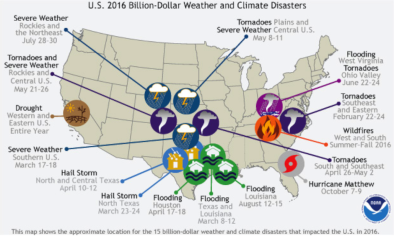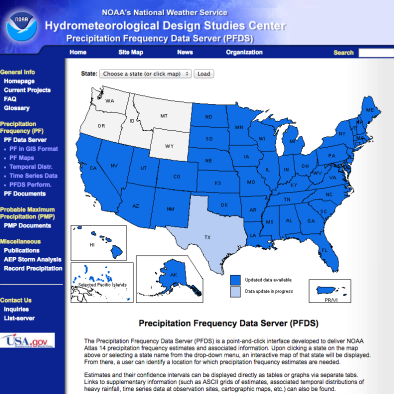Science Source
Louisiana Downpours, August 2016
Note: This analysis was later published in the journal Hydrology and Earth Systems Science, available here
- Performs a rapid attribution analysis in real-time using the best readily available observational data and high-resolution global climate model simulations to provide the necessary analysis to understand the potential role of anthropogenic climate change in the Louisiana flood of August 2016
- Aims to show the possibility of performing rapid attribution studies when both observational and model data, and analysis methods are readily available upon the start
- Presents a first estimate of how anthropogenic climate change has affected the likelihood of a comparable extreme precipitation event in the Central U.S. Gulf Coast
- States that while the flooding event of interest triggering this study occurred in south Louisiana, for the purposes of this analysis, the study defines an extreme precipitation event by taking the spatial maximum of annual 3-day inland maximum precipitation over the region: 29–31º N, 85–95º W—referred to as the Central US Gulf Coast
- Finds that the observed local return time of the 12–14 August precipitation event in 2016 is about 550 years (95 % confidence interval (C.I.): 450–1450)
- Finds the probability for an event like this to happen anywhere in the region is presently 1 in 30 years (C.I. 11–110)
- Finds that these probabilities and the intensity of extreme precipitation events of this return time have increased since 1900
- States that a Central US Gulf Coast extreme precipitation event has effectively become more likely in 2016 than it was in 1900
- Finds the global climate models tell a similar story, with the regional probability of 3-day extreme precipitation increasing due to anthropogenic climate change by a factor of more than a factor 1.4 in the most accurate analyses
Related Content
Science Source
| Aon Benfield Analytics
2016 Annual Global Climate and Catastrophe Report
Headline

Jan 10, 2017 | NOAA Climate.gov
2016: A historic year for billion-dollar weather and climate disasters in U.S.
Science Source
| Geophysical Research Letters
Recent trends in U.S. flood risk
Slater, Louise J., Villarini et al
Real Time Data

Oct 13, 2016 | NOAA
US Precipitation Frequency Data Server


